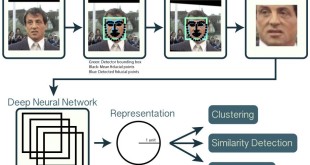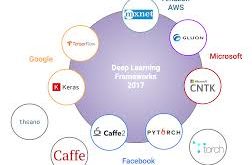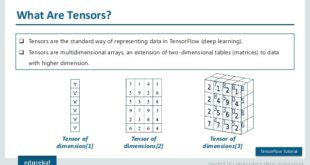China, Russia and North Korea are looking to develop their submarine fleets . Russia is seeking to further bolster its sub-surface capabilities, with new generations of conventional and nuclear propulsion submarines, which promise to be significantly more difficult to detect and track for western naval forces. This includes the Yasen, …
Read More »Yearly Archives: 2020
USS Gerald Ford, the Navy’s Most Powerful Aircraft Carrier Ever with enhanced power projection capability in anti-access/area denial (A2/AD) environment is nearing completion
In 2009, the U.S. Navy began construction of the first new type of aircraft carrier in nearly thirty-five years. The Navy refers to its newest aircraft carrier, the USS Gerald R. Ford, as “4.5 acres of sovereign U.S. territory. Gerald R. Ford is a class of supercarriers being built to …
Read More »Countries accelerating the transfer of military technology to commercial sector through accelerators and military-civilian integration
Many commercial technologies we use today can be traced to military from aircrafts to nuclear power, from semiconductors to computers. Duct tape was invented to protect ammunition cases from water during World War II. The internet grew out of a military research project. Navigation devices, such as Google Maps, rely on …
Read More »US DOD adapts commercial 4G LTE Advanced technology for mission command data, imagery and streaming video to battlefield
As the capabilities of commercial wireless systems and technology is advancing exponentially, the technology gap between them and the military tactical communications systems is widening. Huge product-oriented investments and standardization efforts by the commercial telecommunications industry has enabled 4G wireless along with the global standard, Long Term Evolution (LTE) to achieve peak data rate capabilities approximately ten times …
Read More »Militaries employ machine learning and DNNs for day and night Facial recognition to ship recognition
AI is a field of computer science dedicated to the theory and development of computer systems that are able to perform tasks normally requiring human intelligence, such as visual perception, speech recognition, translation between languages, decision-making, and problem-solving. The commonly used AI techniques are Machine Learning (ML), including Artificial Neural Network(ANN) …
Read More »AI/ML industry starting with Google’s TensorFlow has introduced numerous open source libraries and frameworks
In mathematics, a tensor is an algebraic object that describes a linear mapping from one set of algebraic objects to another. According to Ars Technica, “Basically, a tensor is a matrix of equations, instead of a matrix of pure numbers. Tensor mathematics is the manipulation of these equation matrices as …
Read More »Growing Threat of Biohacking or DNA Malware with development of DNA based Biocomputers and memories
Recently biocomputers are becoming feasible due to advancements in nanobiotechnology and Synthetic Biology. Biocomputers use systems of biologically derived molecules—such as DNA and proteins—to perform computational calculations. It is expected that the most significant advantage of the DNA chip will be parallel processing. Scientists are also using DNA for …
Read More »Tensors are becoming important tool in Warfare from modeling combat to detect military targets using Google’s TensorFlow
In mathematics, a tensor is an algebraic object that describes a linear mapping from one set of algebraic objects to another. According to Ars Technica, “Basically, a tensor is a matrix of equations, instead of a matrix of pure numbers. Tensor mathematics is the manipulation of these equation matrices as …
Read More »Nanogenerators or Nanotechnology enabled Energy harvesting technologies could soon power Smartphones, IoT sensors, biomedical implants and reduce the soldier’s load
Energy harvesting is the process of collecting low-level ambient energy and converting it into electrical energy to be used as a power source for miniaturized autonomous devices. Examples of this can be seen in structural health monitoring, smart packaging solutions, communication systems, transportation, air and aerospace vehicles, structural biology, robotics, …
Read More »Soldiers employing human Energy harvesting technologies including Backpack, knee kinetic and Heel-strike to power devices on the battlefield
The vision for the future soldier is to be combat effective and also highly mobile, adaptive, networked, sustainable with total battle space situation awareness and information assurance. Therefore, he is equipped with night- vision goggles, radios, smartphones, GPS, infrared sights, a laptop as well as batteries to power them. Some …
Read More » International Defense Security & Technology Your trusted Source for News, Research and Analysis
International Defense Security & Technology Your trusted Source for News, Research and Analysis








